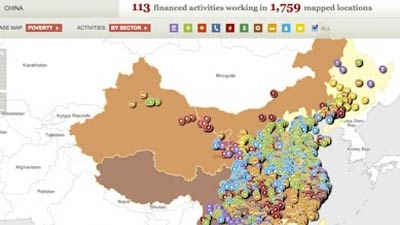Challenge
China’s success in reducing poverty over the last three decades has been remarkable and is well recognized globally. The number of poor in China living on less than $1.25 per day fell from 835 million in 1981 to 208 million in 2005.
However, the remaining poor are harder to reach as they are less concentrated in a specific location and are more dispersed in remote and inaccessible areas. Most of the remaining absolute poor are rural inhabitants, and about 80 percent of these poor reside in the western and central provinces. In addition, there is less responsiveness of poverty reduction to economic growth. It is becoming more costly to reduce poverty further using conventional approaches.
Ethnic minority groups and people with disabilities are known to represent a highly disproportionate share of the rural poor. Ethnic minority groups make up less than 9 percent of the total population, but were believed to account for about 40 percent of the remaining absolute poor at the time of project appraisal, and often lived in the deepest poverty.
Similarly, people with disabilities and households with disabled members represented a large and rising share of the poor. It was believed that people with disabilities comprised about one-third of the remaining rural poor. In poor areas, there was a mutually reinforcing relationship between poverty and disability.
Solution
The project rolled out a participatory approach on an unprecedented scale in China, involving a large number of remote villages in participatory planning and decision making. The project activities were determined by the communities and households from a highly flexible menu of options through a participatory process. The project also had a specific gender focus and effectively reached out to women through the participatory approach.
The project supported basic rural infrastructure (such as rural roads, water supply and sanitation, small water conservation schemes, rural energy, and rural electrification and telecommunication networks), basic education and health services, as well as sustainable mountain agriculture to provide income generation opportunities to remote areas that were rarely reached by other support programs.
The project had a unique outreach to ethnic minorities in the three project provinces. It was one of the largest poverty projects targeted to ethnic minority populations in the Bank. With a grant from the United Kingdom’s Department for International Development (DFID), the project provided assistance to people with disabilities in Yuexi County in Sichuan.

